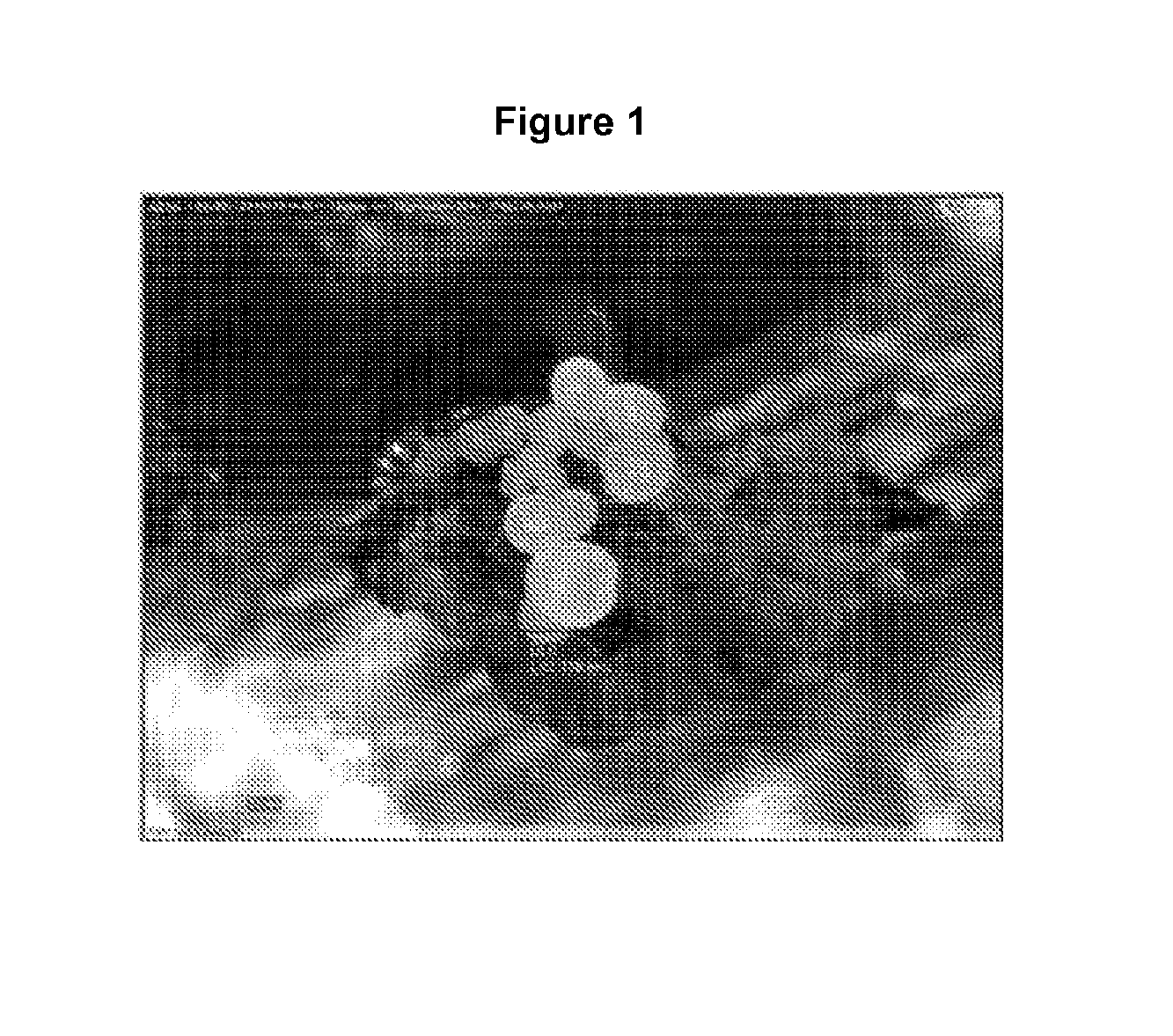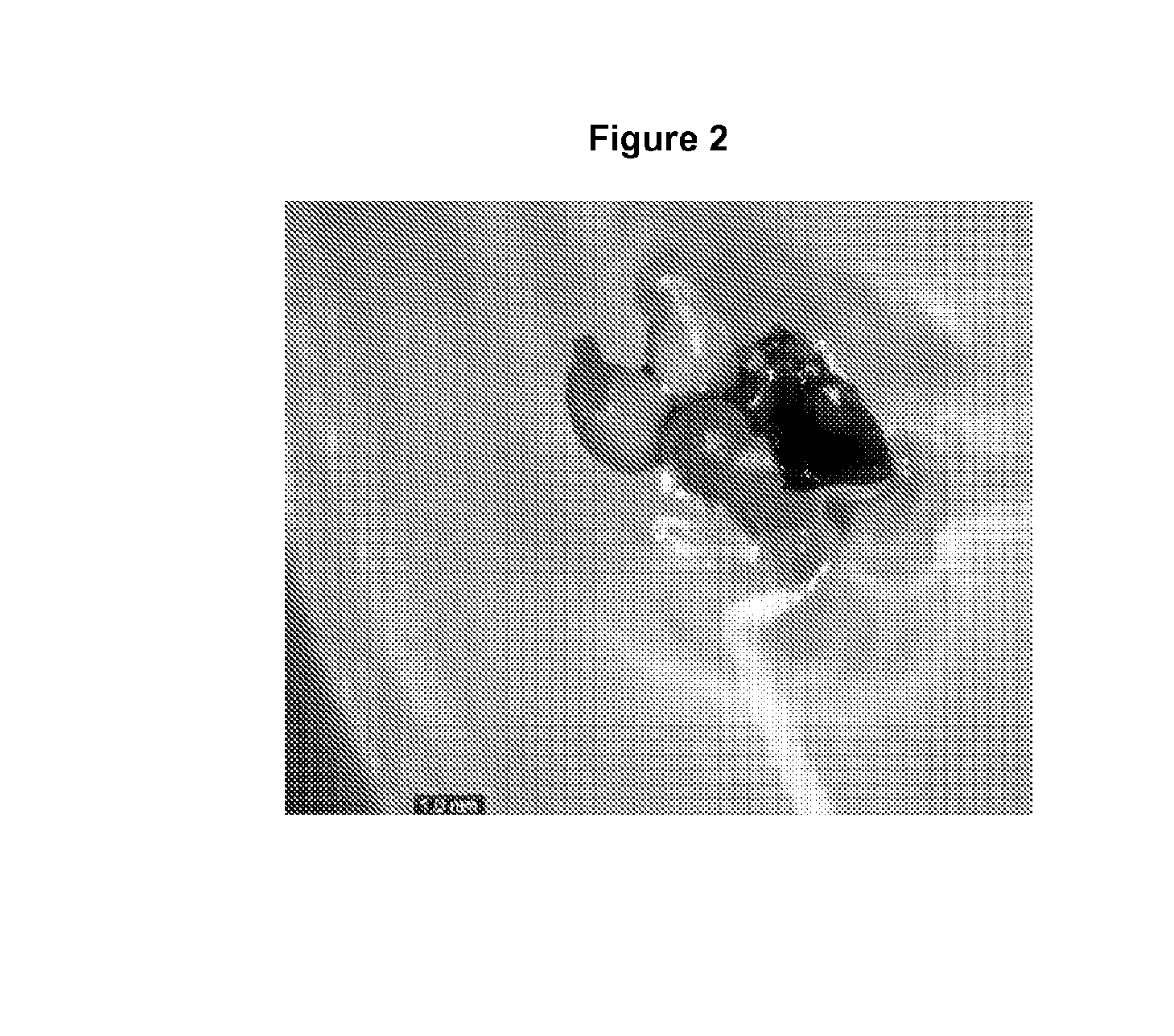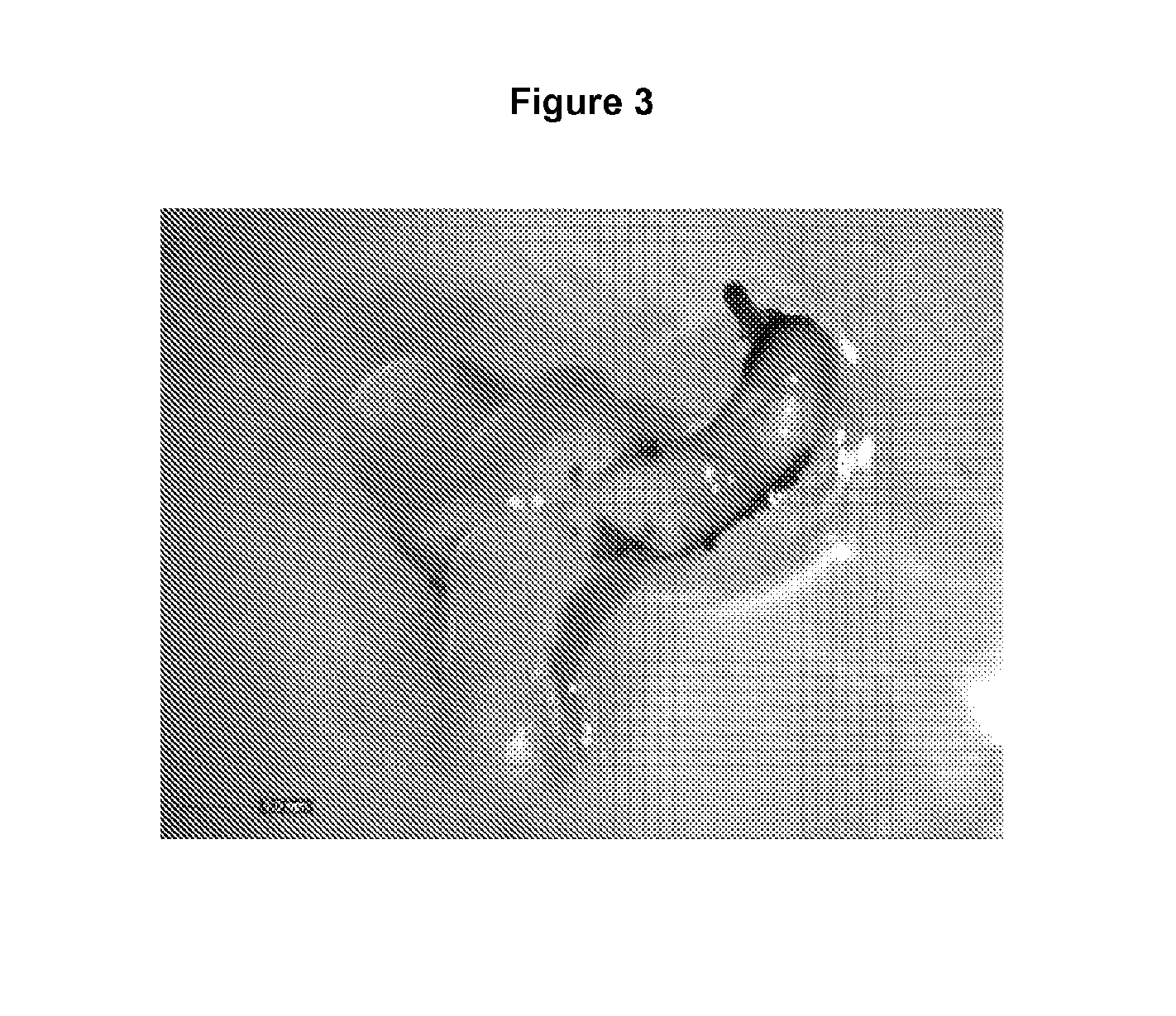Production of plants using somatic embryogenesis
a technology of somatic embryogenesis and plants, which is applied in the field of somatic embryogenesis production of plants, can solve the problems of insufficient amount of planting material with the desired genetic quality and plant health, decreased bean production, and cumbersome tissue culture techniques
- Summary
- Abstract
- Description
- Claims
- Application Information
AI Technical Summary
Benefits of technology
Problems solved by technology
Method used
Image
Examples
example 1
Primary Somatic Embryogenesis
[0126](modified from the protocol of Guiltinan et al., 1997)
[0127]Materials
[0128]Chemicals from Sigma Chemical Co., St. Louis, Mo. were used for all media preparation. Medium pH was adjusted using 1N KOH, prior to autoclaving. All media were autoclaved for 20 min at 121° C. A powdered form of the DKW medium developed by Driver and Kuniyuki (1984) and Tulecke and McGranahan (1985) can be obtained from Sigma Chemical Co. (D-6162). However, due to the hygroscopic nature of the powdered preparation, the use of stock solutions containing the chemical components of the DKW medium is recommended for medium preparation. A hydrated powdered mixture often becomes difficult to dissolve in water, and thus may reduce the effectiveness of the medium. Macronutrients in the DKW medium were separated into A and B stock solutions in order to avoid chemical interactions between inorganic salts at high concentrations, and to prevent precipitation of salts during storage. Fr...
example 2
Use of Epicotyls for Induction and Expression of Embryos by Direct Somatic Embryogenesis, and Production of Embryos in Mature Cotyledon Stage
[0178]Primary Somatic Embryo Development
[0179]Primary somatic embryos were obtained using the methodology described by Li et al. (1998). All of the reagents used in this experiment are Sigma brand.
[0180]Collect immature flower buds of Theobroma cacao L. from CCN-10 clones in a 50-ml centrifuge tube containing cold water in the morning before 9:00 am.
[0181]Prepare 1% (w / v) calcium hypochlorite solution by dissolving 0.5 g Ca(OCL)3 in 50 ml sterile water in a sterile 50 ml centrifuge tube.
[0182]Inside the transfer hood, decant the cold water from the centrifuge tube containing the immature flower buds and transfer all the flower buds into the sterile centrifuge tube containing the calcium hypochlorite solution.
[0183]Immerse flower buds in the calcium hypochlorite solution for 25 min. Remove all the solution and add 40 ml sterile water to rinse fl...
PUM
 Login to View More
Login to View More Abstract
Description
Claims
Application Information
 Login to View More
Login to View More - R&D
- Intellectual Property
- Life Sciences
- Materials
- Tech Scout
- Unparalleled Data Quality
- Higher Quality Content
- 60% Fewer Hallucinations
Browse by: Latest US Patents, China's latest patents, Technical Efficacy Thesaurus, Application Domain, Technology Topic, Popular Technical Reports.
© 2025 PatSnap. All rights reserved.Legal|Privacy policy|Modern Slavery Act Transparency Statement|Sitemap|About US| Contact US: help@patsnap.com



